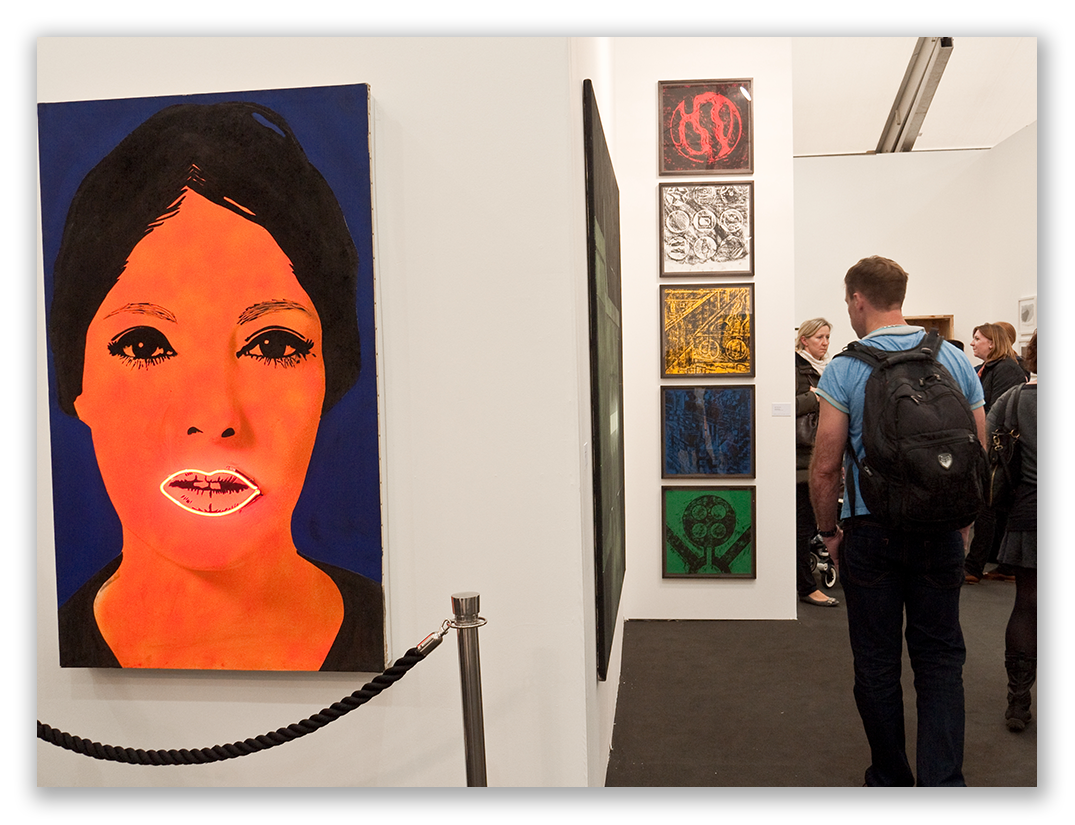 Updated: 04/19/2024
Updated: 04/19/2024
by Laura Gardiner
Studio Manager, Tribeca Printworks
How to Prepare for Your Art Exhibition
Displaying your art at an exhibition is one of the best ways to raise your profile as an artist and share your art with the world. These exhibits give you the chance to sell your work and build connections with those who might be buyers in the future. Showcasing your art at events can also help you connect with industry experts and peers who can help you develop as an artist.
Since art exhibitions are crucial to an artist’s ability to raise their profile and sell their work, you may want to know a few primary art show setup tips you can follow to prepare yourself for an exhibit.
Tips for Preparing for an Art Exhibit
When you have an exhibition coming up, you’re likely excited to share your work, but you may not know how you should prepare. Whether you’re entirely new to art exhibitions or you’ve been showcasing your art at them for years, you can follow some best practices to ensure you’re fully prepared to present the best version of your art and yourself to audience members.
Here are tips for properly preparing before an art exhibition and some of the practices to follow during and after the show:
 Before the Show
Before the Show
When you’re preparing for an art exhibition, you want to set yourself up for success. You can follow these tips to ensure your art looks its best, the details are taken care of and you’re ready to represent your art to the best of your ability at the show.
Review some of the main ways you can prepare for a show:
- Select the right art: When you’ve booked an exhibit, the first step you should take is to select the art you want to showcase. You’ll probably want to select pieces in the same style and fit the gallery’s look. You may also want to consider your audience and gear your pieces towards their tastes.
- Take pictures of your pieces: An exhibit will often request photographs of your pieces for online promotion, press releases, catalogs and other advertising materials. Take high-quality pictures of your art to draw audiences in and represent your pieces in the best way possible.
- Put your final touches on the art: Before taking your art to the exhibition, inspect your work and put any final touches on them.
- Frame the art: If the exhibit isn’t handling framing for you, it’s crucial to frame your art before the show to give it a professional finish. Since the frame is an extension of your art, one of the main exhibition and display techniques of artwork is to choose a frame that complements your art.
- Prepare the right documents: If your art is for sale, ensure you have certificates of authenticity ready for the show. Additionally, do your due diligence and fill out any other relevant documents the exhibit requires. The exhibit may also need your artist CV and artist statement, so get these ready and send them to the gallery on time.
- Transport your art safely: While you transport your art to the gallery, ensure you’ve packed them safely to avoid damage. As accidents can happen even when you pack the pieces as safely as possible, send your art early so you have time to fix any minor damages before the show.
During the Show
When you’re planning an art exhibition checklist, you may also want to consider the actions you’ll need to take while you’re at the show. As you prepare for an exhibit, consider adding these items to your checklist:
- Wear a professional outfit: At a show, you’ll meet many people, and you want to make a good first impression. Your outfit will reflect your art and make a statement, so it’s important you wear something that makes you feel confident and highlights who you are as an artist.
- Have sales agreements and receipts ready: During an exhibit, the audience can usually purchase your art. Ensure you can seamlessly facilitate the sales process by having your sales agreements ready, such as leasing, testing, buying and paying in installment contracts. After someone purchases your art, give buyers a receipt and keep a record of the sale for yourself.
- Offer bubble wrap: Once someone purchases your art, they need a safe way to get it to their home. Some of the main materials needed for an art exhibition are bubble wrap and other safe transportation supplies so buyers can ensure your art stays in pristine condition after purchase.
- Give audiences a way to follow your work: When people enjoy your pieces, they’ll likely want to see what you come up with next. Provide them with information about your social media handles, blog, newsletter and website so they can easily connect with you and follow you in the future.
- Provide a pen and guestbook: It’s a great idea to have a pen and guestbook attendees can fill out with their name and contact information. This information can help you reach out to them in the future. You can also have them sign up for email lists, where they opt in to email updates about your work and future exhibits.
After the Show
While some people think there’s nothing left to do after the show, you can still take a few actions that inspire people to see you again and enhance your artistic credibility. Check out some of the following best practices for what you should do after a show:
- Write thank you notes: Since people took time to view your art and appreciate it, you may want to write personal thank you notes to every attendee, especially if it’s a small show, to demonstrate that you value their time. This small gesture can make a big impression and inspire attendees to turn up to your future exhibits.
- Post pictures of the event: After the event, share photos on your social media accounts to raise your profile as an artist and keep attendees remembering your event long after it’s over. You can also include thank you messages alongside the pictures to show how much you appreciate the exhibit’s attendees.
- Send certificates and artist’s folders to buyers: Whenever someone buys your work, ensure you follow up with them by ensuring they received a certificate of authenticity and an artist folder. Providing them with these materials shows your professionalism and makes it more likely they buy from you again.
- Update audiences on new exhibitions and pieces: If you want to build a following and draw people to future exhibits, send out updates once or twice a year to let them know about future exhibits and your current projects.
Choose Tribeca Printworks for Your Printing and Framing Needs
Now that you know how to prepare for your next art show exhibit, turn to Tribeca Printworks for your printing and framing needs. We can help you turn your art into prints you can sell at an exhibit alongside your original artwork. We also have custom framing services to give your art a perfect finishing touch. Since we’re a one-stop shop for your printing and framing needs, we offer you a simplified experience while still providing you with many high-end printing and framing options.
Upload your art today to begin the printing or framing process. If you have any questions, review our guide on how our printing process works or contact us.

